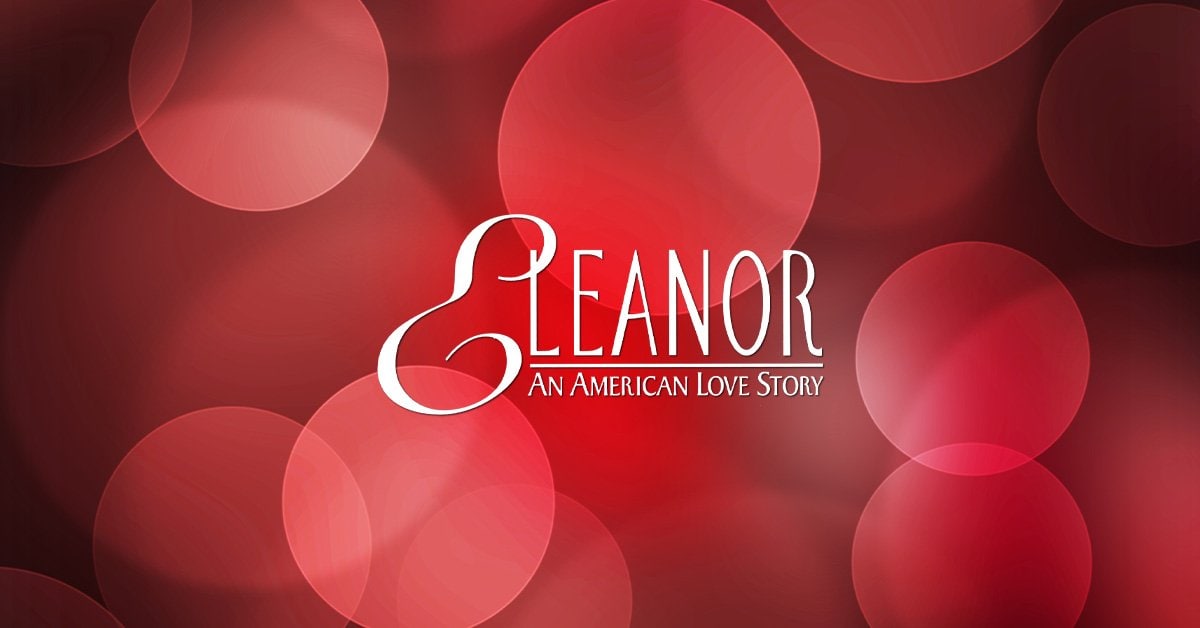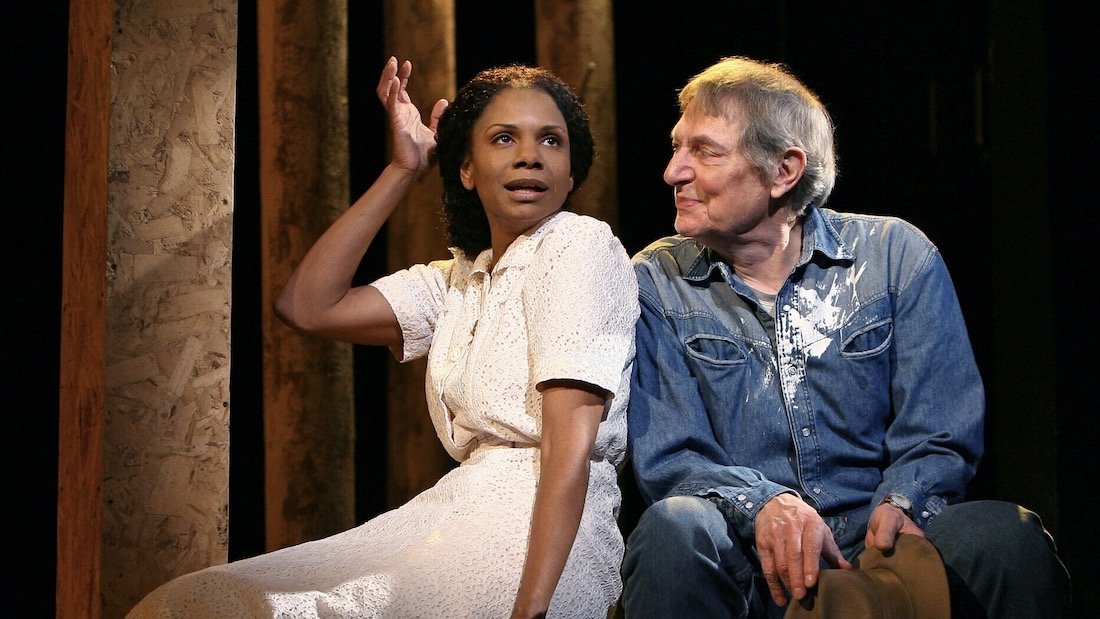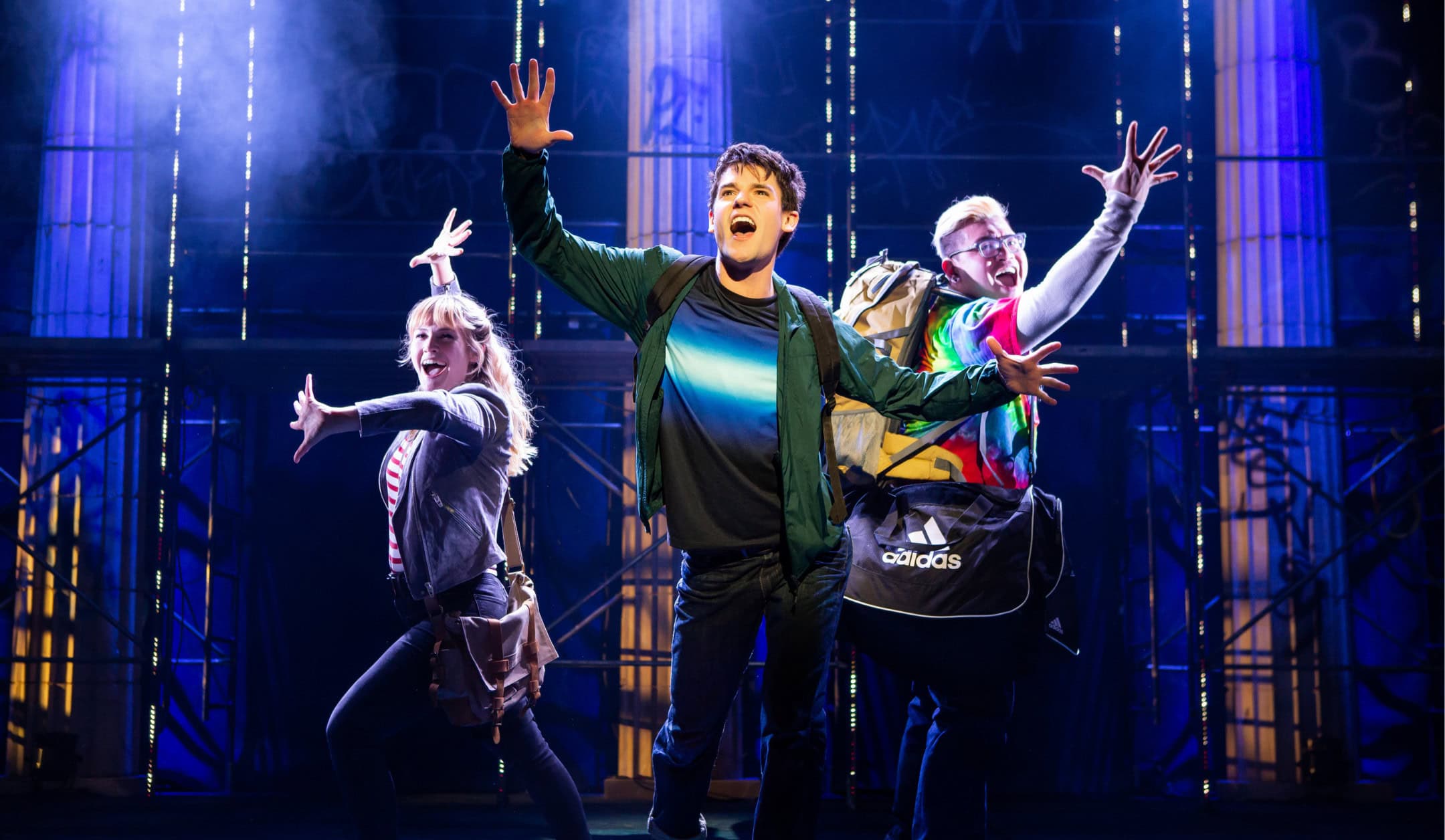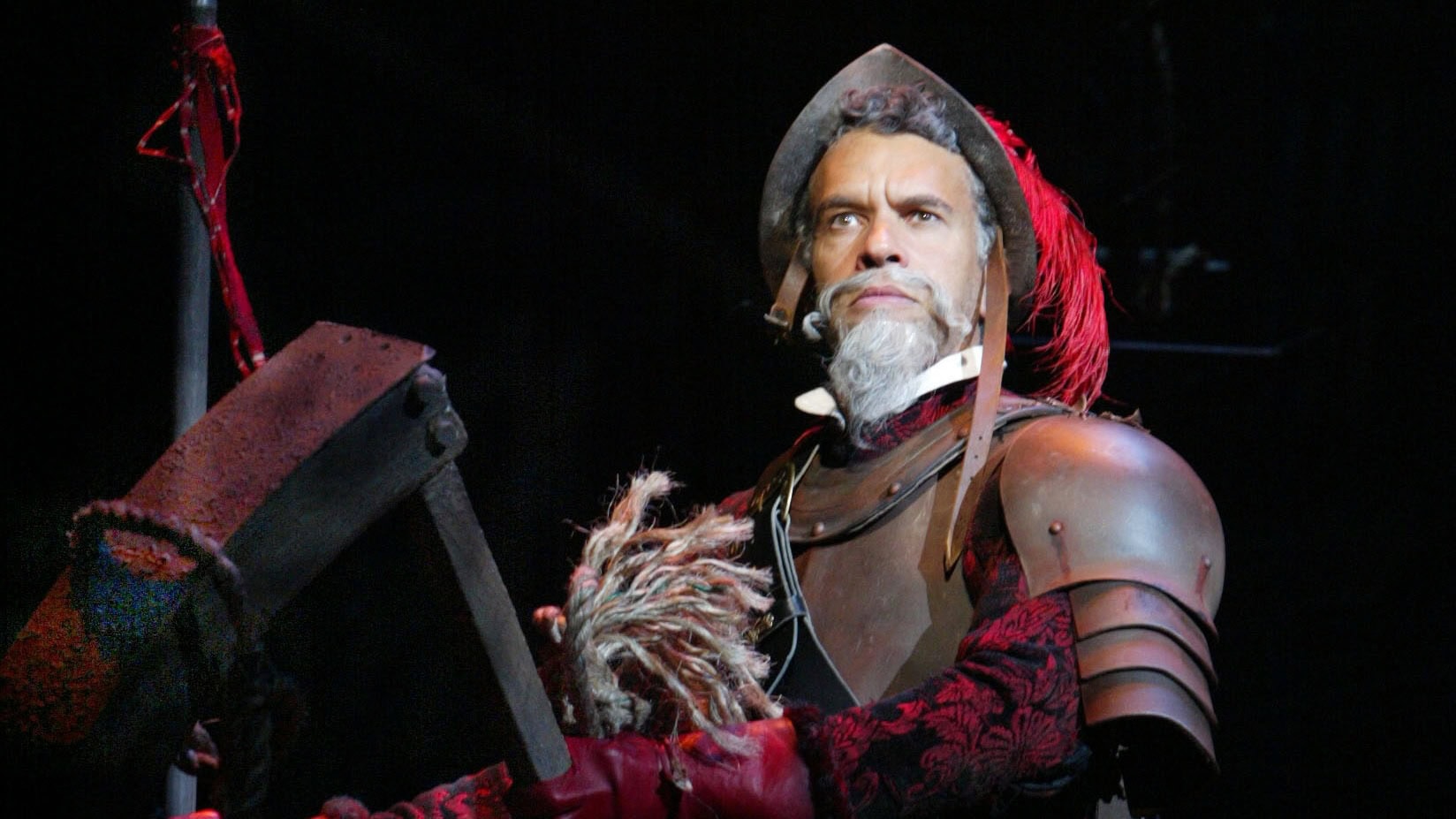
A hit at regional theatres across America, Eleanor – An American Love Story (US/UK) chronicles the remarkable journey of Eleanor Roosevelt, the shy, insecure aristocrat who was destined to become First Lady of the World. Warmth, humor and insight inform the evolving relationship between young Eleanor and Franklin, their passionate courtship, tumultuous marriage and the courage that eventually lead to Eleanor’s emergence as a compelling catalyst for social change.
We spoke to the musical’s creators, Jonathan Bolt (book), Thomas Tierney (music) and John Forster (lyrics), about the show’s inspirations, developmental journey and continued appeal.
How did the idea of a musical about Eleanor Roosevelt come about?
TT: It was commissioned by TheaterWorks/USA for a tour and began as a one-act musical called First Lady. It toured for several years and played in New York at Town Hall and the Promenade Theatre.
Why not a show about Franklin Roosevelt?
JF: The original commission was to do a show about Franklin Roosevelt. But as we researched the idea, we found ourselves most inspired by Eleanor’s story – the daunting challenges she overcame, and the ultimate hand she had in creating the 32nd President.
TT: She was orphaned at an early age, raised by her grandmother in a dysfunctional household, intimidated by FDR’s mother Sara, and then she had to face Franklin’s infidelity and, shortly after that, his polio. While the marriage in our story is theirs, the point of view is hers. And she did somehow end up becoming “First Lady of the World.”
What was the appeal of writing about Eleanor?
JB: We previously wrote a show about Teddy Roosevelt for TheaterWorks, and it was very popular. A lot of the TheaterWorks shows were biographical, about famous people, and they played schools and theatres around the country. And it just seemed to me that a show about Eleanor – because I had met her, and I’d read a lot about her – that a play about her early years would be interesting. There’s a wonderful book by Joseph Lash – Eleanor and Franklin. So that book itself was an inspiration. The first few chapters are about Eleanor and her early years, and then Franklin – his early years, the polio and all that. But his story had been done in Sunrise at Campobello. The drama of that story was certainly a big Broadway hit and a big movie. So focusing on Eleanor, we wrote First Lady, and it went out on tour and TheaterWorks produced it in an off-off-Broadway theatre.
The musical is about the young Eleanor and Franklin – and ends as Franklin resumes a political career after polio. Why not continue though the White House years?
JF: We decided that those early years of their marriage were the least well-known and the most dramatic. After Franklin gets elected Governor of New York in 1928, the rest is history. But audiences aren’t as aware that it was Eleanor who made all that happen, who encouraged Franklin to go back into government after polio devastated his legs and his life. It was she who insisted on the at-the-time radical idea that, even in a wheelchair, he could be a public servant.
How did the show get developed?
TT: A theatre near Seattle (The Village Theatre in Issaquah, WA) saw First Lady, and offered to produce the show if we would expand the show to two acts. This we did and they included it in their season and moved it to downtown Seattle. This brought Eleanor to the attention of the Pittsburgh Public Theatre, followed by the Marriott Lincolnshire near Chicago and then Musical Theatre West in Los Angeles. Producing director Frankie Hewett at Ford’s Theatre in Washington saw it and that led to a tryout at Duke University’s Preview series and then a good run at Ford’s Theatre.
Why did you decide to expand the one-act First Lady into a two-act musical and how different is the full-length version?
JF: The young audiences version made us realize that we had a story that was gripping. But First Lady focused on Eleanor’s younger years. In Eleanor, we were able to tell much more of her story, and to include the love affair, and its devastating effect on her which ends the first act.
JB: When we did the show at Ford’s Theatre in DC, Bill Clinton was president and the Monica Lewinsky scandal was happening. Hillary (a big fan of Eleanor) came to see the show, and of course everyone was aware she was there. At the end of the first act that night, you could have heard a pin drop – no applause. I think people just didn’t know what to do, because of course she was going through something very similar at that moment in time.
“At the end of the first act that night [in DC], you could have heard a pin drop – no applause.”
What do you think is the appeal for this show today?
JF: Eleanor Roosevelt was born into a world where women had no voice. Following her conscience, she fought for what she believed in, and emerged victorious. Today we live in an age where women are finding their power to change the world and achieving great things. Eleanor is a perfect role model for them.
Jonathan Bolt, we understand you actually met Eleanor. How and where did that happen and what was she like?
JB: I was in my early 20’s when I met Eleanor. I was working as a set designer at a star summer theatre in Hyde Park, NY, near her cottage home, Val-Kill. One of the acting apprentices at the theatre was Grania Gurewitsch, the daughter of Mrs. Roosevelt’s doctor and close friend, David Gurewitsch, and she was staying with Mrs. Roosevelt for the summer. Eleanor had come to see one of the shows, and I met her briefly then. Most evenings, Mrs. Roosevelt’s chauffeur would drive Grania home. As she had considerable charm, it became my habit to wait with her for a ride. Every now and then, Mrs. Roosevelt herself would tool up in her big blue Packard convertible. She always smiled with a special shyness and always thanked me for accompanying the girl. At the of the summer, I was invited for lunch and a swim at Mrs. Roosevelt’s home, Val-Kill. I mostly remember all the photos on the walls, all those faces that shaped the 20th century. And as far as I know, Mrs. Roosevelt – I saw no other person there – no help or anything – made the sandwiches, and she brought them to us, and left me and Grania on the patio to have lunch. But I don’t remember anything about the sandwich.
The show played in many theatres around the country. How did that help with the show’s development?
TT: It gave us time in between productions to do further rewrites and to create new songs. Also we worked with excellent directors, including Tony-award winning director Mel Shapiro in Pittsburgh and choreographer Rob Marshall (now the successful Hollywood film director).
John and Tom, what inspired you to produce a cast CD from the Ford’s Theatre production?
TT: We had a splendid cast of mostly Broadway actors (including original Fantasticks star Rita Gardner as FDR’s mother), and a production we were proud of. Also, our two leads had won Washington DC’s Helen Hayes best actor awards. And we had done considerable rewrites for the Ford’s Theatre show and thought we’d gotten to the point where it was time for an album.
What is the score like?
TT: Because it’s a period piece, we were able to use jazz age elements along with classic musical theatre influences. The story provided many emotional moments that inspired the score, and for the dance moments, we found snappy, upbeat rhythms to add some fun.
In addition to the original production with a cast of 15+, you have also created a smaller cast version for 9 or more actors. Why? And how is it different?
TT: The thought was that many theatres around the country would like the idea of a smaller cast to save on production costs, and when we looked at the show scene by scene, it seemed a good candidate for streamlining. The only challenge was an opening number that needed the larger cast. So we decided to replace that opening with a new scene involving Eleanor and her grandmother in preparation for her “coming out” event in New York society (Eleanor hated the idea of a Debutante Ball!). And that sets us up for the event itself where she meets her distant cousin Franklin – they hadn’t seen each other since childhood.
What would you say were the main challenges in writing this show?
JB: The same challenges for any show. Compressing such a big story so that it’s doable. There’s a lot that goes on in that story that you can’t show. I mean, a lot of Roosevelt relatives, so we had to be very selective. The characters surrounding Eleanor and Franklin are fascinating.
What about the show’s characters?
JF: Eleanor features two indelible leading roles as well as many colorful, often hilarious, supporting roles. In addition to Eleanor’s Uncle Teddy (Roosevelt) and scandalous cousin Alice (Roosevelt), there is her tragic, high-living father, Elliott, her unlikely mentor, Louis Howe, and her domineering mother-in-law, Sara. As in the musical Hamilton, our show’s aim is to make the history irresistible, taking audiences on a smart, sassy tour of a political era very different from our own – one that was a lot more fun! In fact, our goal was always to create a show that is funny and dances, but that is also moving, with something more on its mind. Audiences want both.
How does it speak to contemporary theatre makers and audiences?
TT: The show champions a woman and celebrates her accomplishments. It also brings to life other historical figures like Uncle Teddy Roosevelt and his daughter Alice – people we hear about but don’t get much of a sense of in documentaries or books of history.
JF: Contemporary theatre is sensitive to our societal sore spots, often dealing with issues of inclusion, fairness and/or systemic inequality. From the opening scene of Eleanor, these are bedrock values on which it turns. Her struggle to reconcile the privileged world of her birth with the pervasive misery around her is a key driver of the story and one that transforms her marriage to Franklin. Beyond its obvious entertainment values, the show is an exploration of what one person with a conscience can do in the face of an establishment that doesn’t want to change. Eleanor becomes more relevant with every passing day.
“Eleanor was a great lady. And she was a very human one. It is that humanity that we have tried to capture.”
What makes Eleanor ideal for theatres to produce?
TT: In addition to the two outstanding leading roles as well as the good supporting roles, it also shows a piece of history that many today aren’t aware of. The musical is warmhearted and leaves an emotional punch, especially for how Eleanor managed to overcome her many obstacles.
JB: Eleanor’s journey from a shy, insecure girl to the most influential woman of our time is filled with incredible irony, poignancy and even humor. It is a journey which gives her strength and independence that is truly fascinating and therefore theatrical. Eleanor was a great lady. And she was a very human one. It is that humanity – the failures, the fears, and the love – that we have tried to capture.
To license a production of Eleanor – An American Love Story, visit Concord theatricals in the US or UK.

Plays that Inspired Musicals

QUIZ: Which Character from The Lightning Thief Are You?

